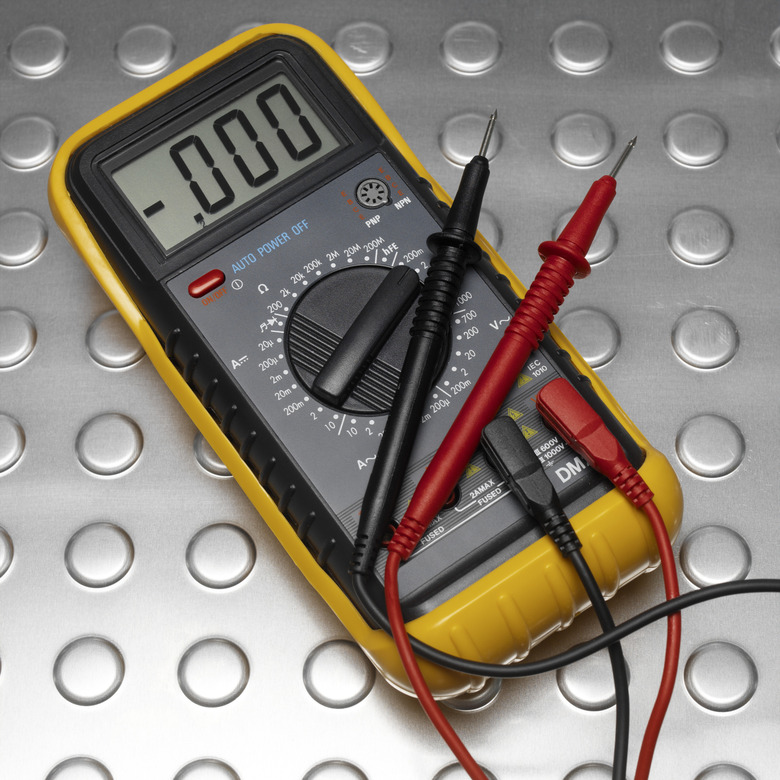How To Read Ripple Voltage With A Meter
Today's key technologies are based on electrical devices. Electricity is due to a flow of electrons through metallic wires. There are two basic types of electricity, known as alternating current (AC) and direct current (DC) types. DC electricity works a fixed voltage and does not have any variance with time. AC electricity has a sinusoidal dependence with time, and the voltage oscillates up and down. A ripple voltage is a small AC voltage, which is placed on top of a DC offset. It can be measured using a digital multimeter.
Step 1
Plug the probes into the digital multimeter. Two probes are normally supplied. Plug the red probe into the positive terminal and the black probe into the negative terminal. Switch on the digital multimeter by turning the dial on the front panel clockwise.
Step 2
Select the "AC Voltage" by turning the dial on the front to the picture of an oscillatory wave. Bring the probes into contact with the circuit that has the ripple voltage. The multimeter will only measure the AC component of the signal — i.e., the ripple voltage. The display should change to indicate the measured value of the ripple voltage amplitude. In order to characterize a ripple voltage completely, the frequency needs to be measured.
Step 3
Rotate the front dial to the frequency function. Bring the probes into contact with the circuit that has the ripple voltage. The frequency (in Hz) will be displayed on the multimeter. The rippled voltage will now be fully characterized.
Cite This Article
MLA
Markings, Samuel. "How To Read Ripple Voltage With A Meter" sciencing.com, https://www.sciencing.com/read-ripple-voltage-meter-10017535/. 24 April 2017.
APA
Markings, Samuel. (2017, April 24). How To Read Ripple Voltage With A Meter. sciencing.com. Retrieved from https://www.sciencing.com/read-ripple-voltage-meter-10017535/
Chicago
Markings, Samuel. How To Read Ripple Voltage With A Meter last modified March 24, 2022. https://www.sciencing.com/read-ripple-voltage-meter-10017535/
